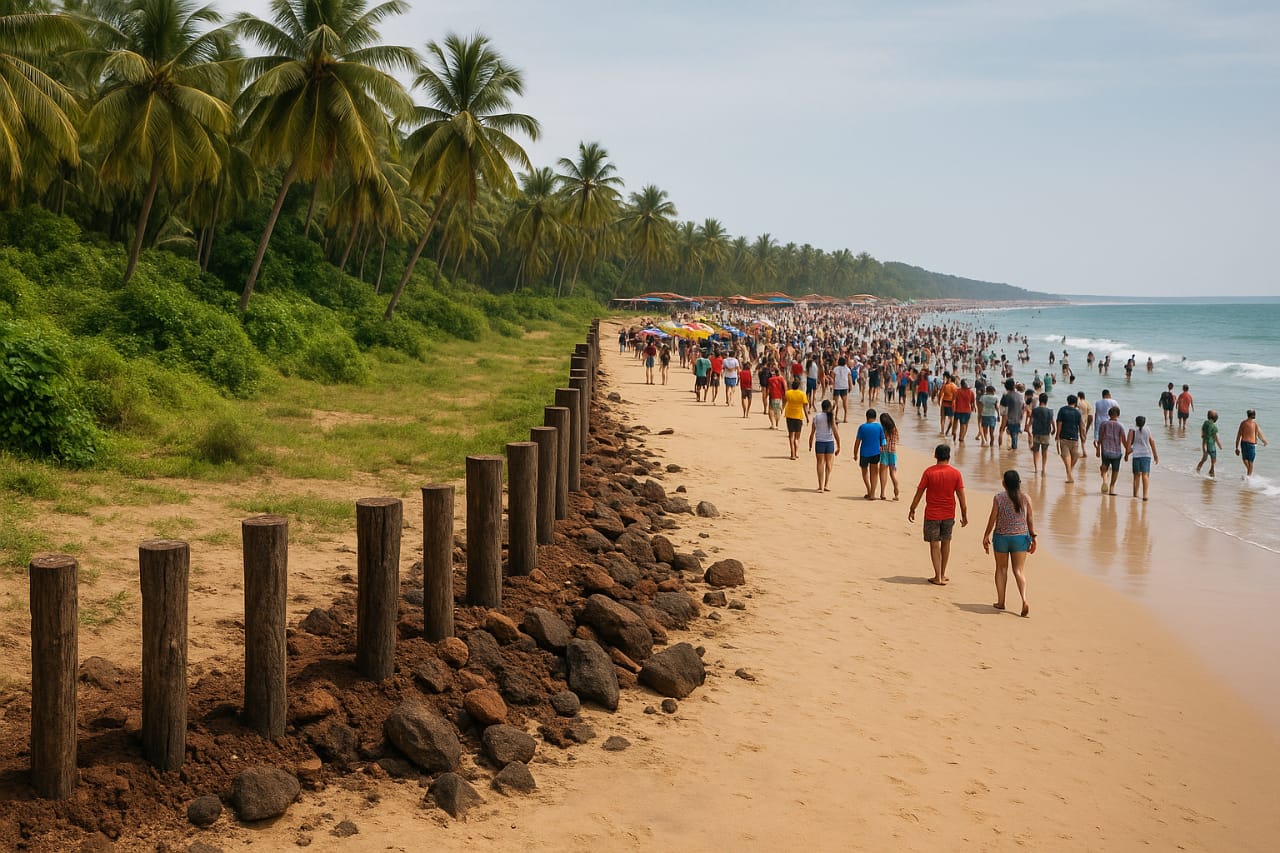If the environment that sustains Goa’s appeal is compromised, the tourism economy will collapse under its own weight

The Goa government’s recent announcement to develop a world-class global tourist destination appears woefully disconnected from the ground realities of its crumbling tourism infrastructure. Roads to popular beaches remain potholed, sewage systems in major coastal belts are overwhelmed, and garbage collection continues to falter during peak tourist seasons.
The persistent encroachments, unregulated constructions, and declining public amenities reflect administrative inertia rather than readiness for “global standards.” Rather than stretching limited resources thin in pursuit of grandiose visions, the government should prioritise restoring existing infrastructure, enforcing zoning norms, and strengthening civic management.
Global tourists do not seek only luxury they demand efficiency, sustainability, and safety. Until Goa can meet these benchmarks locally, global aspirations will remain hollow rhetoric disconnected from environmental and infrastructural realities.
Despite its charm as India’s premier coastal getaway, Goa’s natural environment is rapidly nearing a saturation point. Unchecked tourism expansion marked by aggressive infrastructure growth, increasing visitor numbers, and a lack of regulatory foresight has brought into question the State’s environmental carrying capacity. This article evaluates the conflict between sustainable ecological stewardship and the persistent growth of Goa’s tourism sector, drawing attention to the failure of governance and the long-term consequences of ignoring ecological thresholds.
Environmental
carrying capacity
Environmental carrying capacity refers to the maximum number of people or activities a region can sustain without long-term ecological damage. In Goa, this includes pressure on water resources, waste management, biodiversity, air quality, and land use. The National Centre for Sustainable Coastal Management had previously warned that tourism growth in ecologically fragile zones, such as coastal belts and forest buffers, must be capped to prevent irreversible damage.
Tourism’s toll on
natural resources
The post-pandemic resurgence in tourist inflow has led to a resurgence in short-term rental accommodations, illegal shacks, and private events held in protected or semi-protected zones. Coastal wetlands have been encroached upon for commercial development. Water tables in areas such as Anjuna, Arambol, and Morjim have experienced depletion due to over-extraction for private resorts and luxury hotels.
Concurrently, the quantity of plastic, sewage, and solid waste generated far exceeds the capacity of most panchayats and municipalities to dispose of it sustainably.
Unregulated infra
and habitat loss
Several infrastructure projects, including tourism-centric expressways and beachside villas, have been sanctioned with minimal environmental impact assessments. According to the Goa State Pollution Control Board, violations of Coastal Regulation Zone (CRZ) norms have multiplied over the past five years. Moreover, forests and khazan lands are being diverted for roadways and “eco-resorts,” a contradiction in terms when these resorts are built by destroying the very ecology they claim to honour.
Policy paralysis and
governance gaps
Despite the Environment Protection Act, 1986 and the Coastal Regulation Zone Notification of 2011 (amended in 2019), enforcement mechanisms remain weak. The Goa Coastal Zone Management Authority (GCZMA), often the last bulwark against environmental violations, has frequently been accused of issuing ex post facto approvals or failing to act on complaints from local communities. The tourism department’s “Ease of Doing Business” model favours investors, while environmental departments are under-resourced and under-empowered.
Carrying capacity
studies ignored
A study by the National Institute of Oceanography had estimated that Goa’s beaches could not support more than a few thousand visitors per day without facing erosion and degradation. However, current inflows often exceed that tenfold during peak seasons. The Goa State Biodiversity Board’s own research points to collapsing mangrove ecosystems in regions like Chicalim and Cavelossim due to tourism-linked pressures. Yet, there is no binding legal framework compelling authorities to act upon these studies before sanctioning new projects.
Alternative tourism
models overlooked
Sustainable tourism models such as community-led eco-tourism, cultural tourism in hinterlands, or regulated seasonal tourism are often relegated to government brochures. Fiscal incentives continue to flow towards large-scale hotels and casino-driven entertainment hubs in urban coastal zones. This reinforces a skewed tourist demographic that prioritises consumption over conservation.
Global coastal destinations, such as the Galápagos Islands or Boracay in the Philippines, have implemented caps on visitor numbers, banned single-use plastics, and imposed heavy penalties for waste mismanagement. These actions were initiated only after the carrying capacity had been demonstrably breached. Goa stands at a similar threshold and risks a forced retreat from unregulated growth if pre-emptive measures are not taken.
Legal pathways for
course correction
The principles of intergenerational equity and precautionary action, upheld by the Indian Supreme Court in Vellore Citizens’ Welfare Forum v. Union of India (1996) 5 SCC 647, may guide corrective legislation. Local governing bodies must be empowered to reject tourism projects that violate zoning or sustainability norms. Furthermore, a binding legal requirement for environmental carrying capacity evaluations must be embedded into every tourism-related clearance mechanism.
Tourism cannot be allowed to evolve into an ecological liability. If the environment that sustains Goa’s appeal is compromised, the tourism economy will collapse under its own weight. Goa must prioritise a long-overdue audit of its environmental limits, backed by a statutory cap on annual tourist inflows and reinforced zoning regulations. Without this, the State’s natural charm risks being lost to short-term gains and long-term ruin.